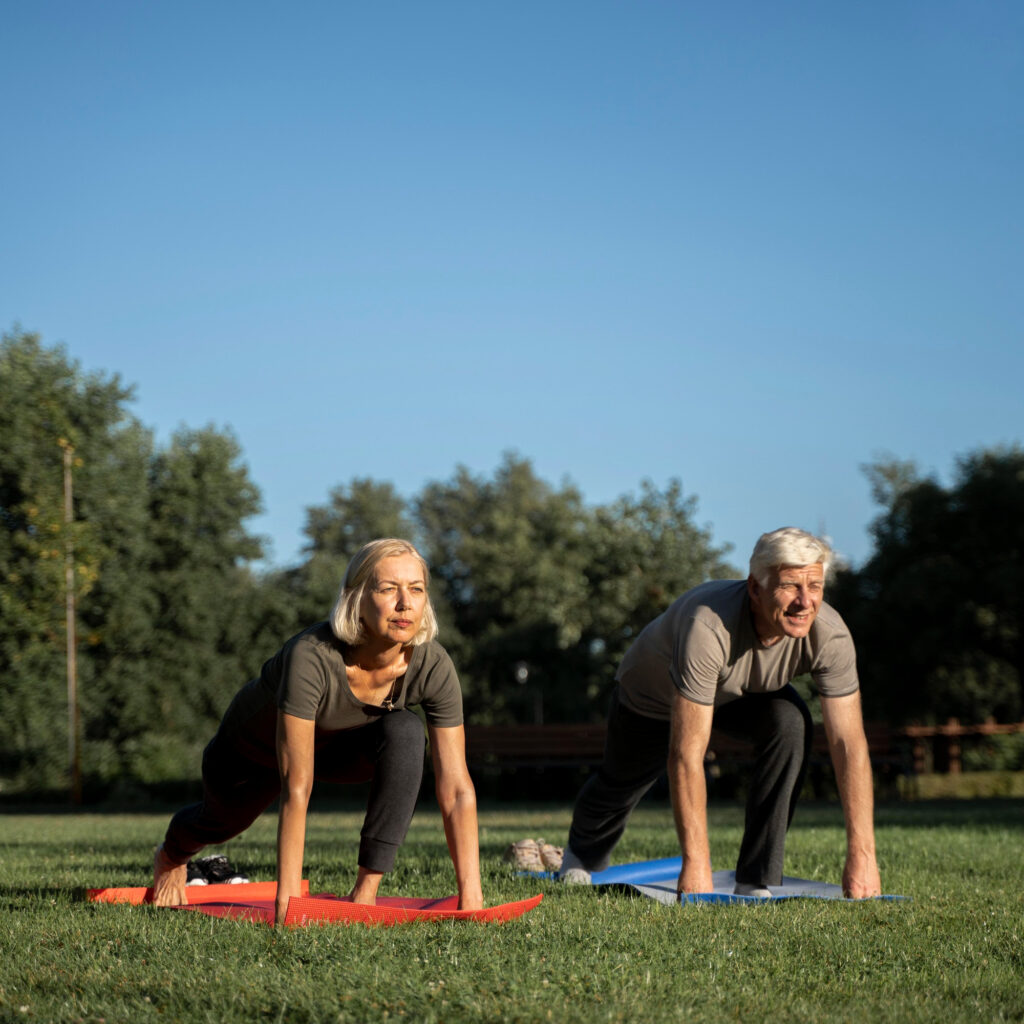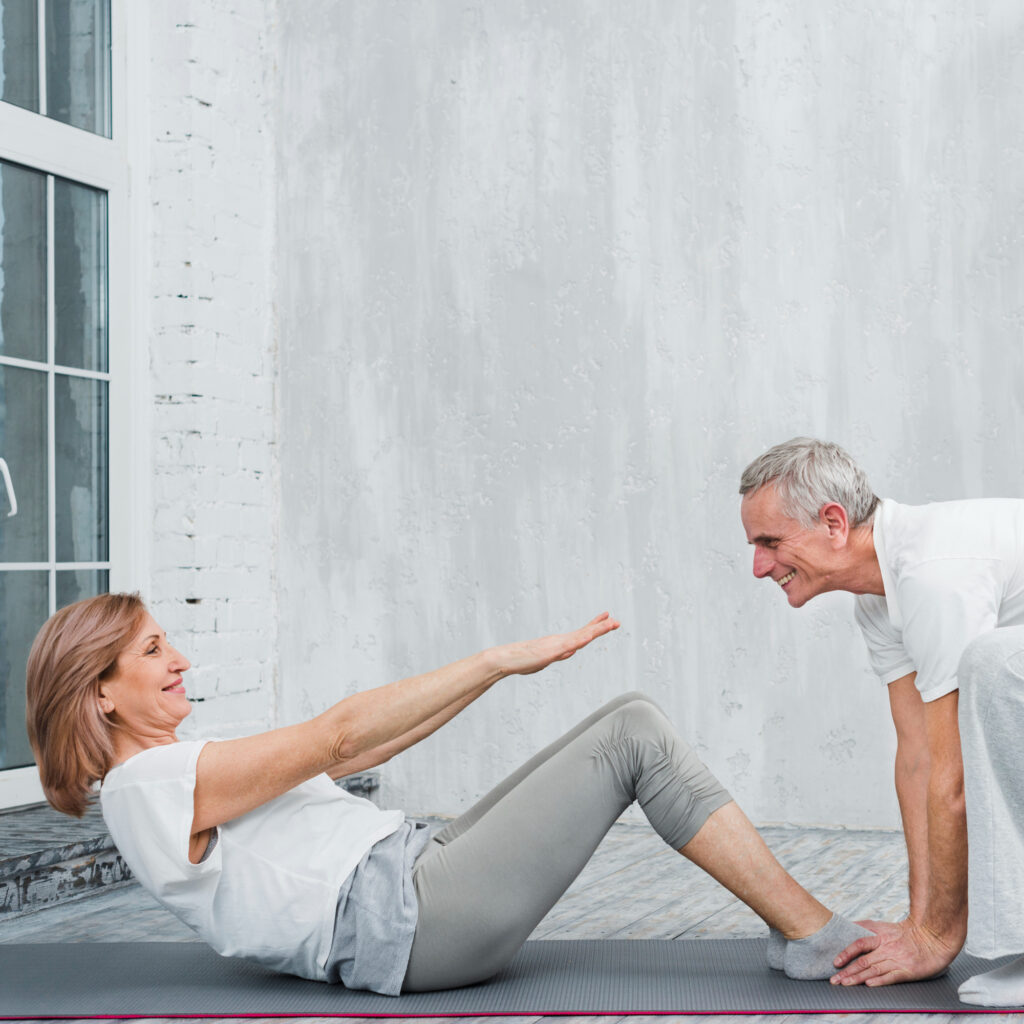As you get older, your body goes through significant changes. An older body needs more attention as soon the natural rejuvenation process of your cells slows down. One of the most noticeable effects of aging for many people is a decrease in strength, mobility, and balance.
These changes can eventually impact your daily routine as you become more cautious about falling or getting hurt, which can lead to a loss of independence and a decrease in your overall quality of life. The good news is that a consistent and mindful exercise routine can help alleviate or even improve the common signs of aging.
Pilates is a fantastic full-body, low-impact workout that focuses on aligning and strengthening your body’s structure. No matter your age, fitness level, or abilities, it’s never too late to start practicing Pilates. Pilates can adapt to your skills and strength, supporting your well-being for years to come.
Why should older adults consider Pilates?
Pilates has been shown in numerous studies to provide a wide range of benefits for older adults. It can greatly improve quality of life and overall well-being. It’s important to consult with a doctor before starting any new exercise routine, especially if you have health concerns. Working with a qualified instructor or joining a specialised class is recommended.
When it comes to healthy aging, participating in a Pilates class for older adults or having private sessions with an instructor can help you achieve your goals and experience the positive effects of Pilates.
Here are some key benefits that can make a difference in your later years.
1. Avoids injury
Pilates helps you avoid getting hurt by getting your body ready for daily tasks that need strength and flexibility. By focusing on supporting and stabilising your joints, Pilates teaches you to move in a way that reduces the risk of injury. Being more in tune with your body and having a stronger mind-body connection also improves your proprioception, making you more aware of your environment and how you navigate through it.
2. Reduces back pain
Pilates is well-known for its ability to alleviate back pain by focusing on the core muscles, which include more than just the abs. The core muscles include those in the back, hips, inner thighs, and pelvic floor. They act as a flexible support system for the organs and spine, providing stability and lift. When your core is strong, it can better support your back. Many studies have shown that practicing Pilates can lead to significant improvements in chronic lower back pain, with some participants experiencing relief in as little as 3 months.
3. Boosts immune system
Research indicates that Pilates can positively impact your immune system, particularly for older individuals. A study conducted on men aged 65 and above revealed notable enhancements in immune system function. How does it work? Pilates promotes better blood circulation and lymph flow, which in turn helps your body eliminate toxins more efficiently and improves oxygenation.


4. Enhances mobility
Movement is the perfect combination of strength and flexibility that enables you to have complete control over your body’s range of motion. Relying solely on strength can result in stiffness and an increased risk of injury. Similarly, relying solely on flexibility can leave your body unsupported, weak, and prone to injury as you age. Research has proven that Pilates, with its seamless transitions and mindful movements, is an excellent method for building strength and providing support. It effectively enhances the range of motion in your joints, making everyday activities and extracurricular pursuits much easier.
5. Improves posture
Have you ever heard stories of people getting shorter as they get older? Or developing a hunched posture? Misalignment and poor posture can be caused by a decrease in bone density and unhealthy habits. These factors can lead to joint and organ compression, as well as tight and imbalanced muscles, often resulting in discomfort. Pilates aims to align and balance the body, focusing on improving joint mobility and creating a sense of ease. By developing both strength and flexibility in the muscles, and by becoming more aware of body alignment, you can often achieve improved posture.
6. Enhances bone density
Pilates has been found to potentially enhance bone density, particularly in postmenopausal women. This is crucial because low bone density can lead to increased risk of fractures during everyday movements like standing or walking. Preserving bone density as you get older is essential in preventing conditions like osteopenia and osteoporosis. If you’re aiming to maintain bone density, consider trying Pilates using equipment like the Reformer and Tower. Unlike traditional mat exercises, these apparatus-based workouts utilise spring resistance to provide a weight-bearing effect. This form of Pilates may be more effective in enhancing bone density compared to mat exercises alone.
As people age, it becomes increasingly important to maintain a consistent and mindful exercise routine to preserve their quality of life. The aging process often brings about a decrease in mobility, flexibility, and muscle mass, which can result in stiffness, pain, and a loss of independence. Furthermore, the fear of falling and sustaining bone fractures can be detrimental to older individuals’ lives. That’s where Pilates comes in. With its wide range of exercises and modifications, Pilates is an excellent choice for older adults as it is a low-impact form of exercise.
Ready to revitalise your golden years with Pilates? Become a member now for a healthier, more vibrant you!



